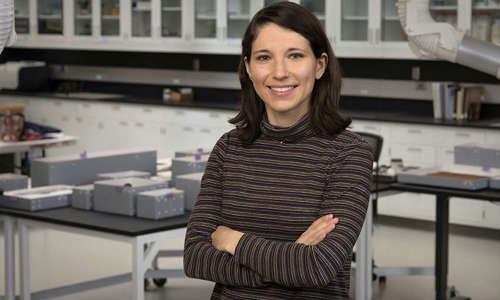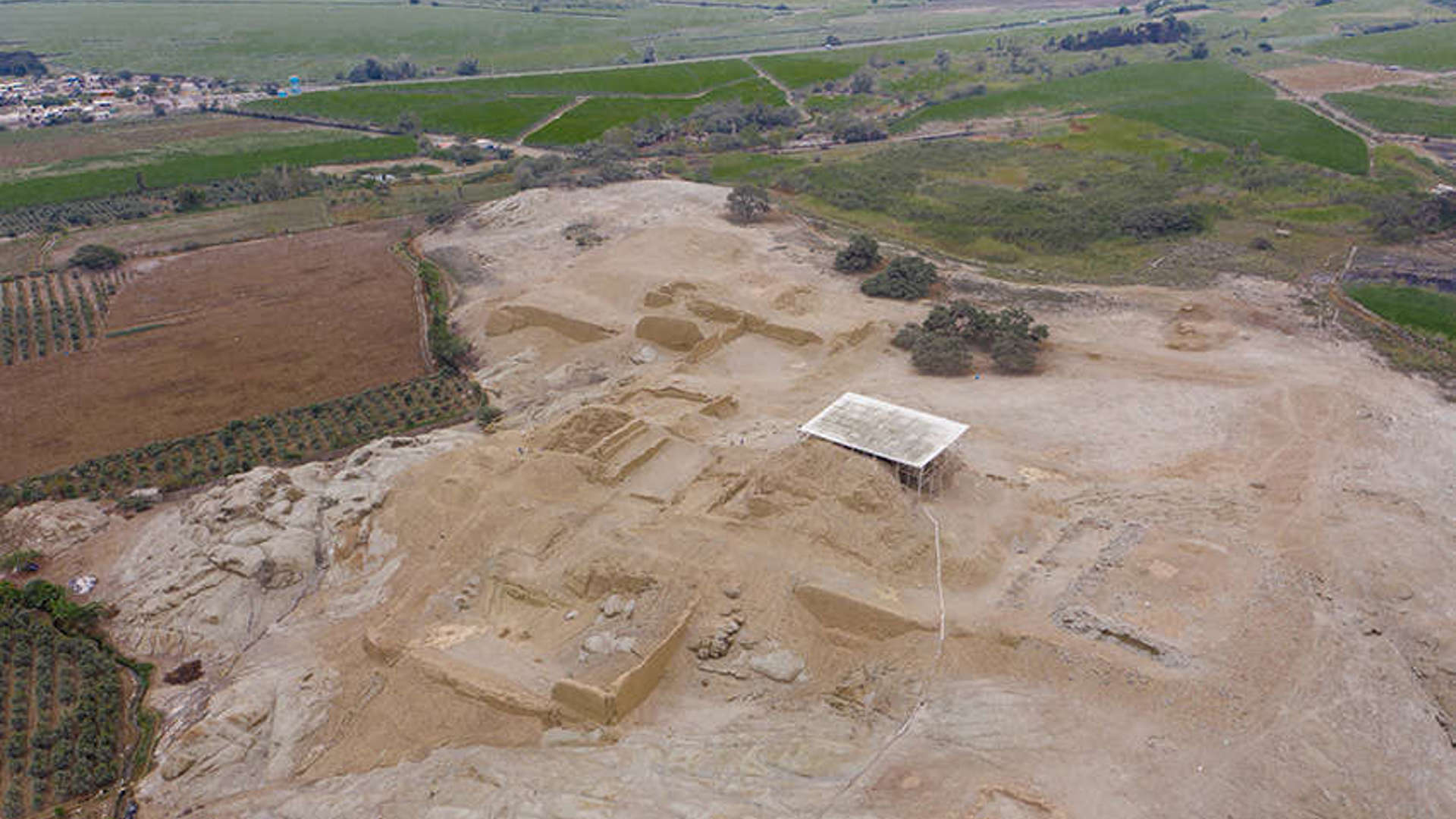Painted Worlds
Painted Worlds: The Moche Project at Pañamarca, Peru (2023–2030) is a collaborative effort between Columbia University and the Denver Museum of Nature & Science. It investigates, documents, and conserves Moche period (ca. 500–850 CE) murals and architecture at Pañamarca, a major center on the southern frontier of Moche influence in northern Peru. Working with local communities, the project seeks to preserve and share this important archaeological and world heritage site.
The Moche civilization (ca. 300–850 CE) occupied Peru’s north coast and is recognized for its ceramics, monumental adobe structures (huacas), and murals depicting mythical and real beings. Pañamarca, home to adobe platforms, walls, and temples, first gained attention in the 1950s with the discovery of a mural of a Moche priestess. In 2010, Lisa Trever’s team documented new paintings, revealing a once vibrantly painted site filled with dynamic scenes of rituals, pageantry, and epic narratives.
One of the most striking finds is the “Hall of the Moche Imaginary,” a pillared hall with murals of enigmatic figures, including a two-faced man, warriors with animal features, and mythic battles. Excavations in 2024 uncovered a pillared throne room depicting a high-status female leader receiving visitors and seated upon a throne. She is linked to the moon, the sea, and textile arts, with murals showing women spinning and weaving, as well as a procession of men carrying textiles and her crown. While scholars debate whether she was a priestess, goddess, or queen, physical evidence—such as greenstone beads, fine threads, and human hair—confirms the throne was occupied by a real person, likely a seventh-century female leader.
Another major discovery is the “Hall of the Braided Serpents,” a previously unknown monumental structure featuring wide square pillars adorned with intertwining serpents with human legs—a motif unique in Moche art. Other paintings depict warriors, anthropomorphized weapons, and a large monster chasing a man. This hall underwent multiple renewal events, including offerings, burning rituals, and wall whitewashing. Elevated above the plaza, it may have provided an exclusive vantage point for observing ceremonies below.
These discoveries highlight Pañamarca’s artistic innovation, differing from the structured style of the Moche heartland. With many murals still buried in remarkable condition, ongoing research will continue to unveil the secrets of this extraordinary site.
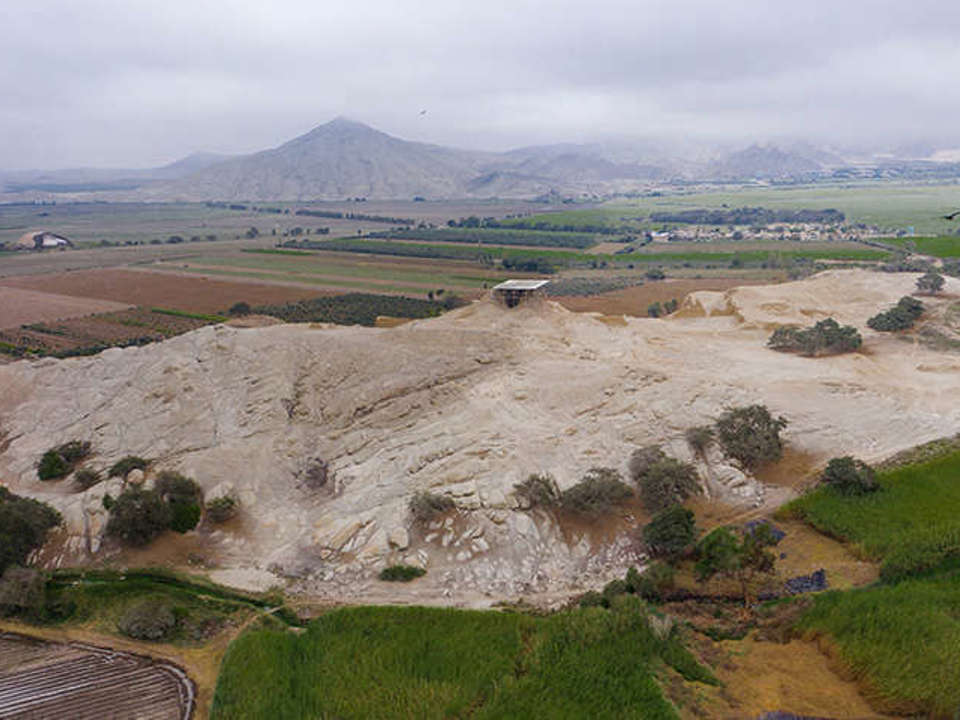
Aerial drone photography by J. Antonio Ochatoma Cabrera
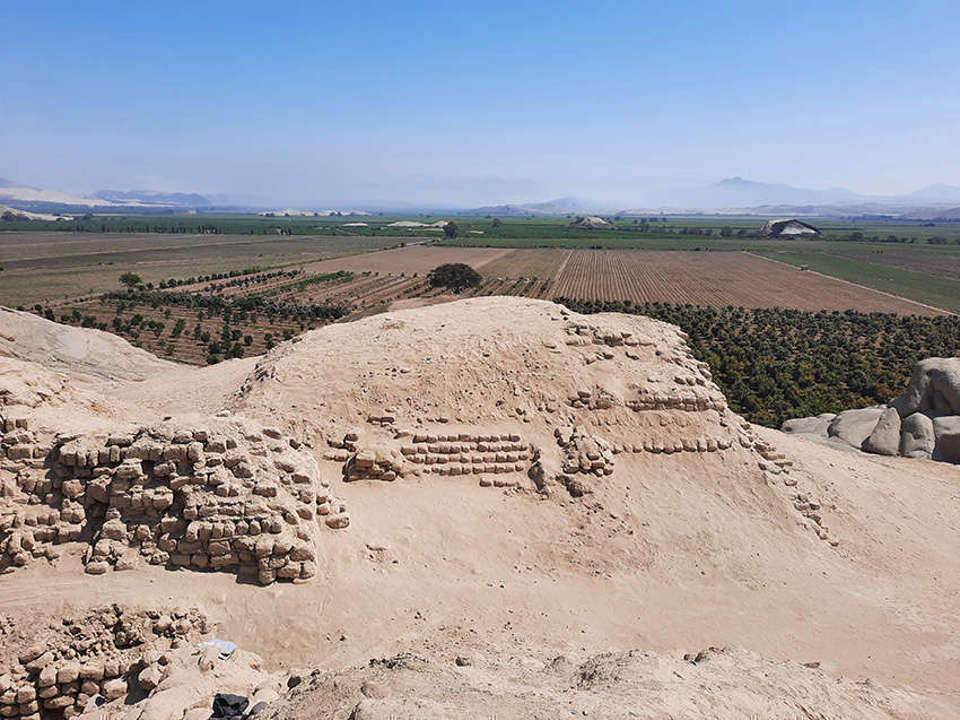
The area of the pillared building at Pañamarca
Photograph by Jessica Ortiz Zevallos
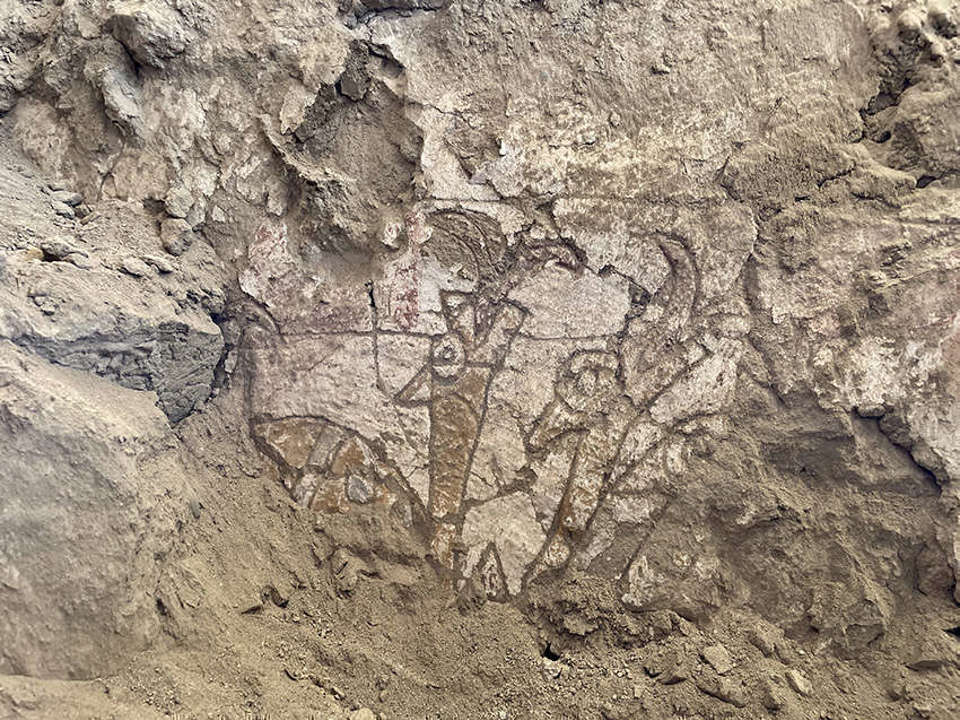
Excavation of a painted wall at Pañamarca
Photograph by Lisa Trever
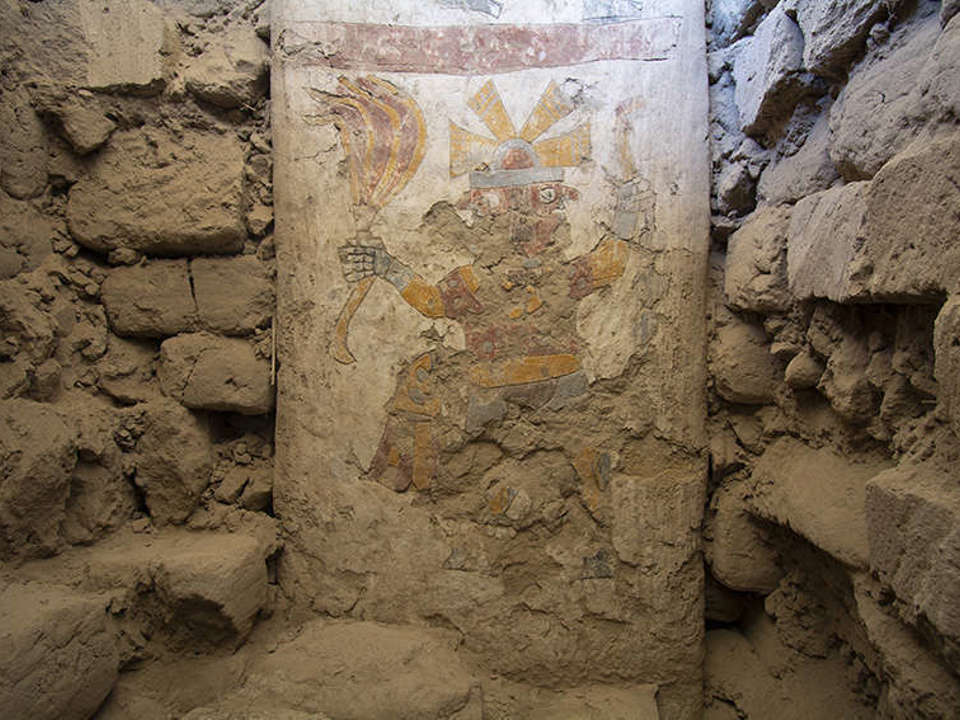
The lower figure painted on the pillar
Photograph by Lisa Trever
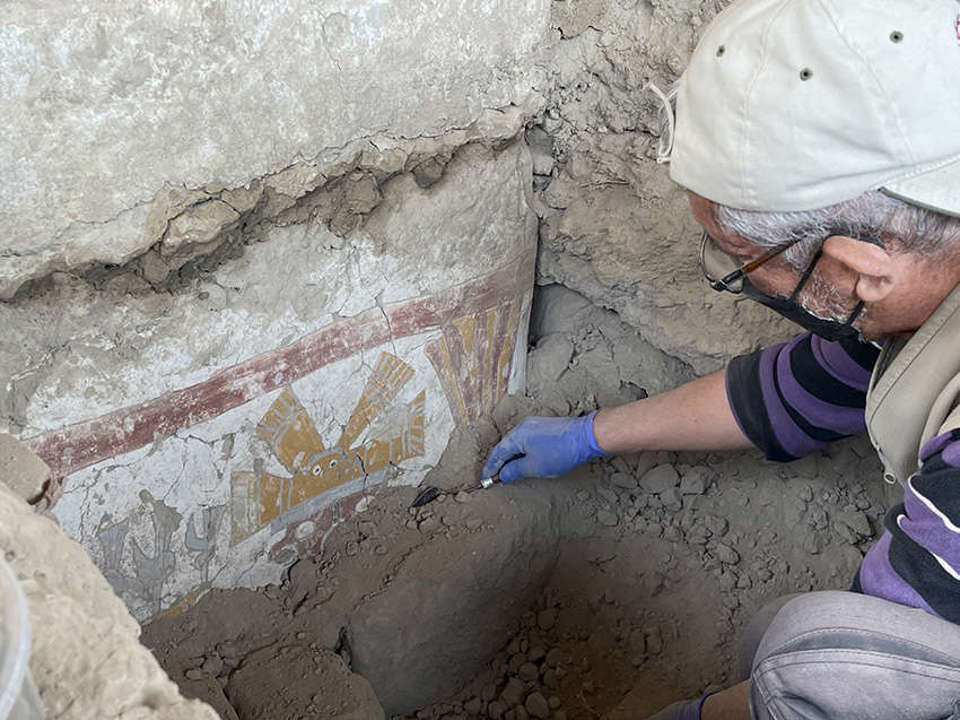
Conservator Rafael Gordillo Méndez reveals the painted surface of the pillar
Photograph by Lisa Trever
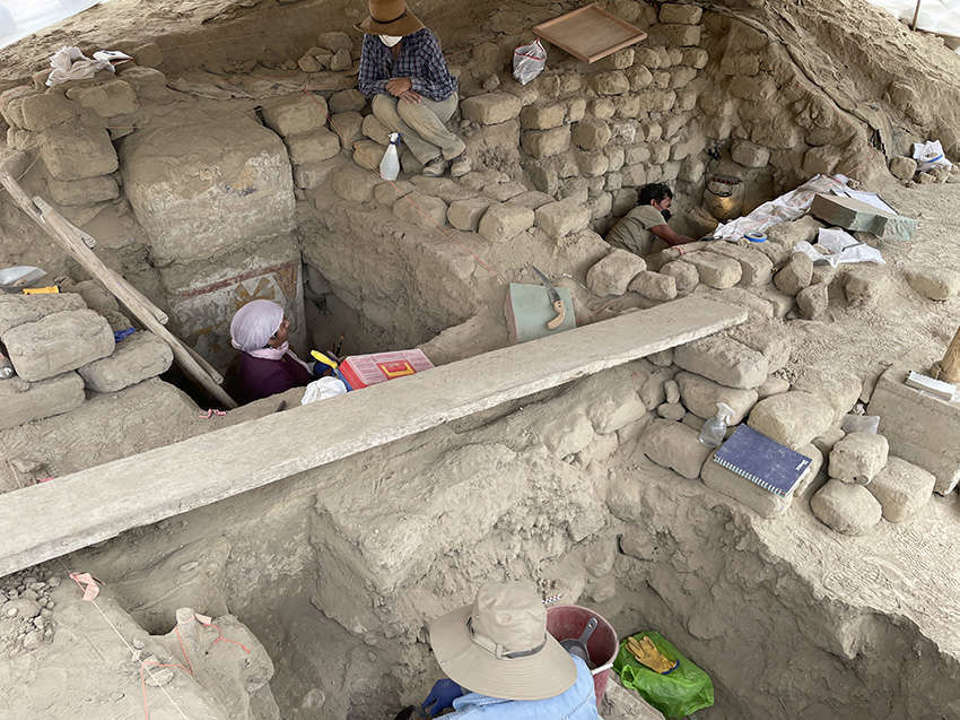
The team at work in the study, documentation, and conservation of the painted architecture
Photograph by Lisa Trever
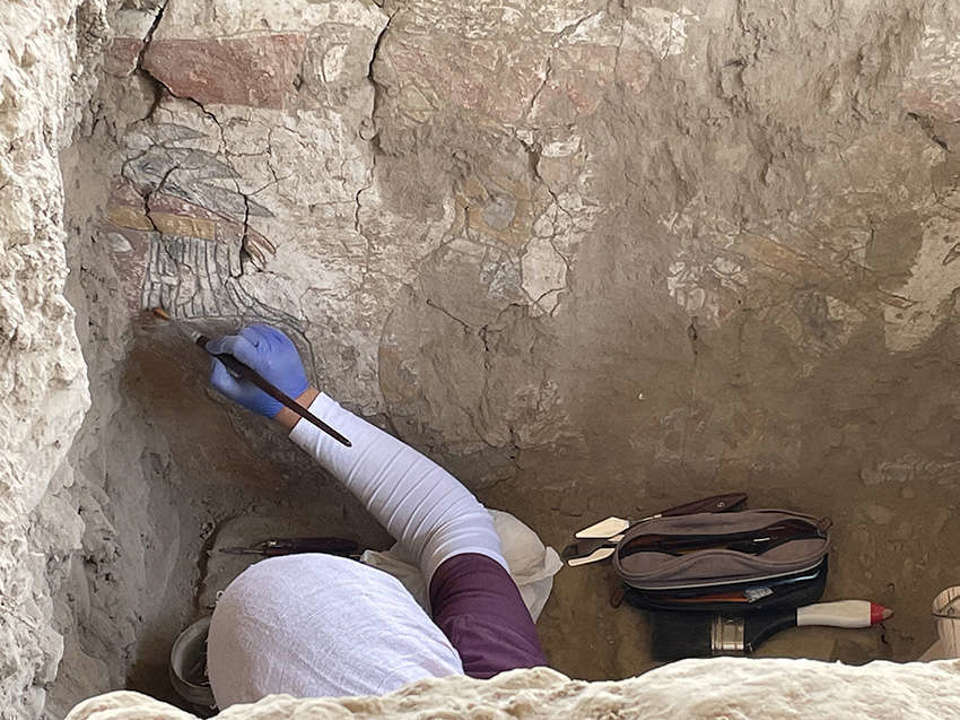
Conservation advisor Blanca Sánchez removes sediment from a painted wall
Photograph by Lisa Trever
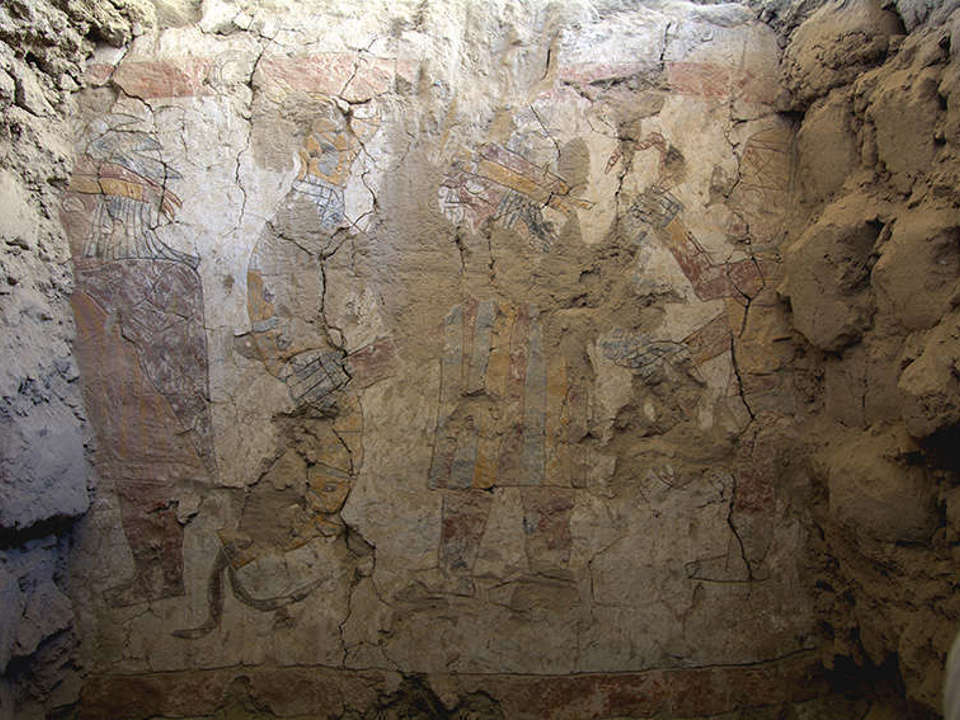
Three individuals appear in the upper part of an inner wall at Pañamarca
Photograph by Lisa Trever
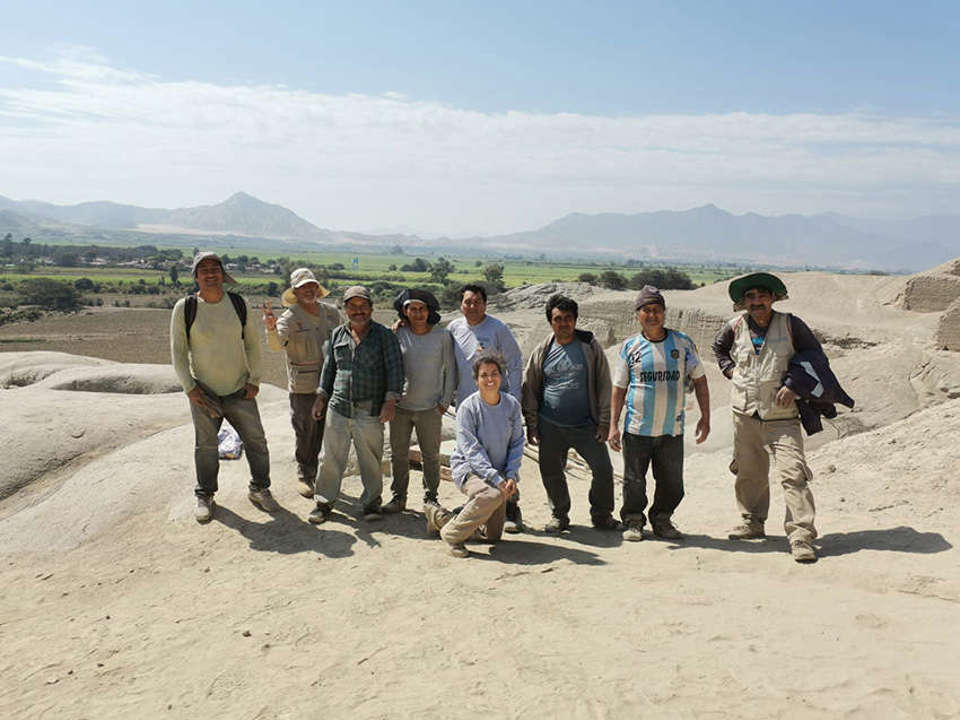
Director Jessica Ortiz Zevallos with members of the archaeological research project team at Pañamarca
Photograph by J. Antonio Ochatoma Cabrera
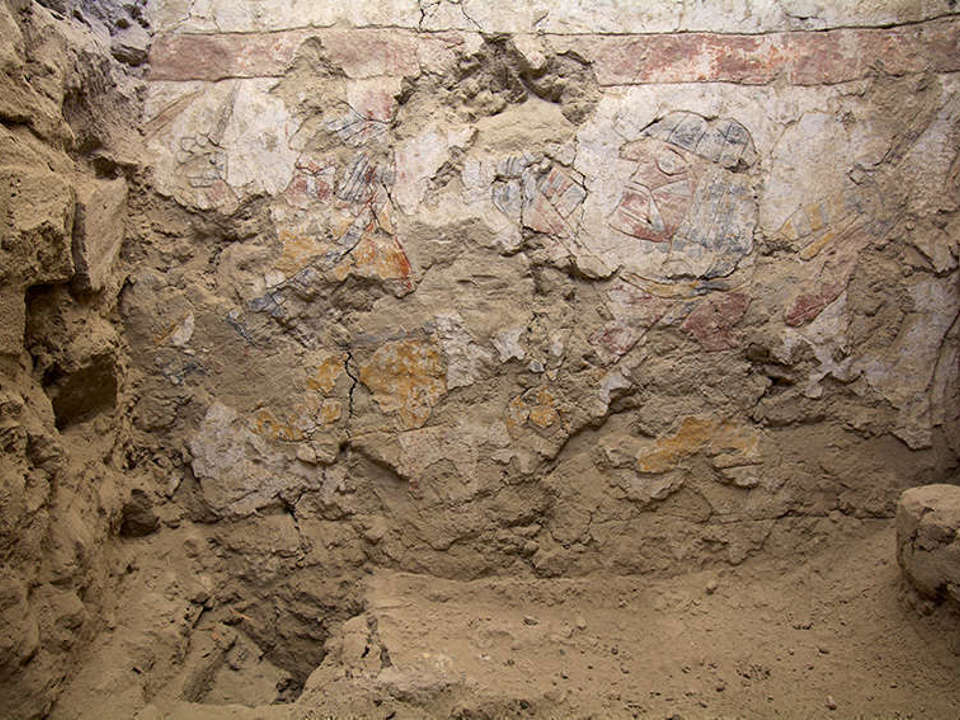
Two seated women display colorful threads and spinning or weaving tools in the lower part of the same inner wall
Photograph by Lisa Trever
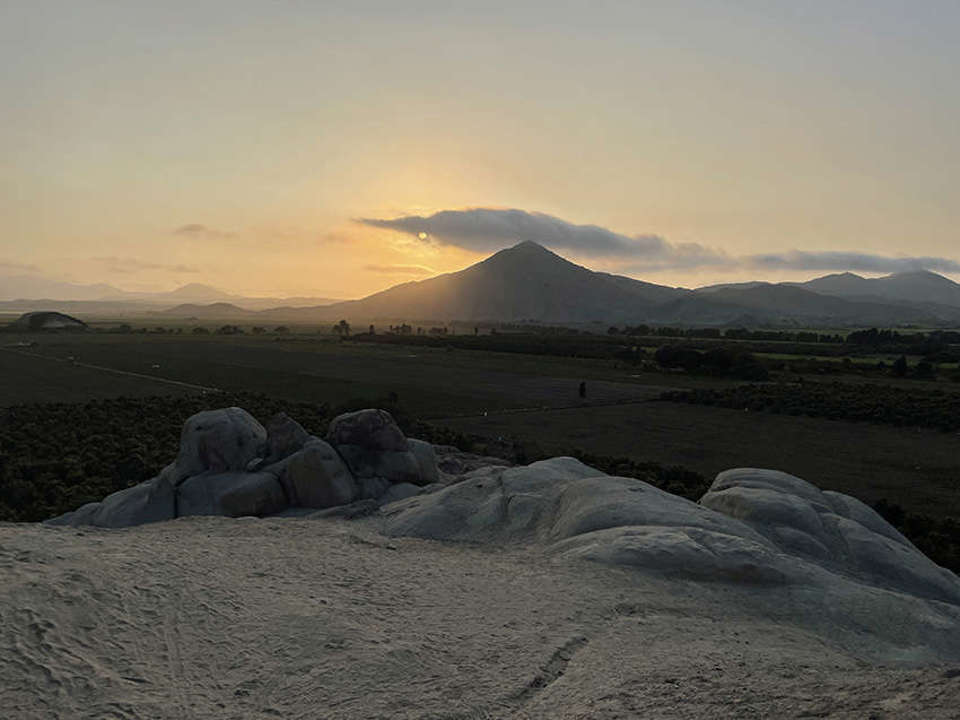
Sunset at the close of the 2022 field season at Pañamarca
Photograph by Lisa Trever
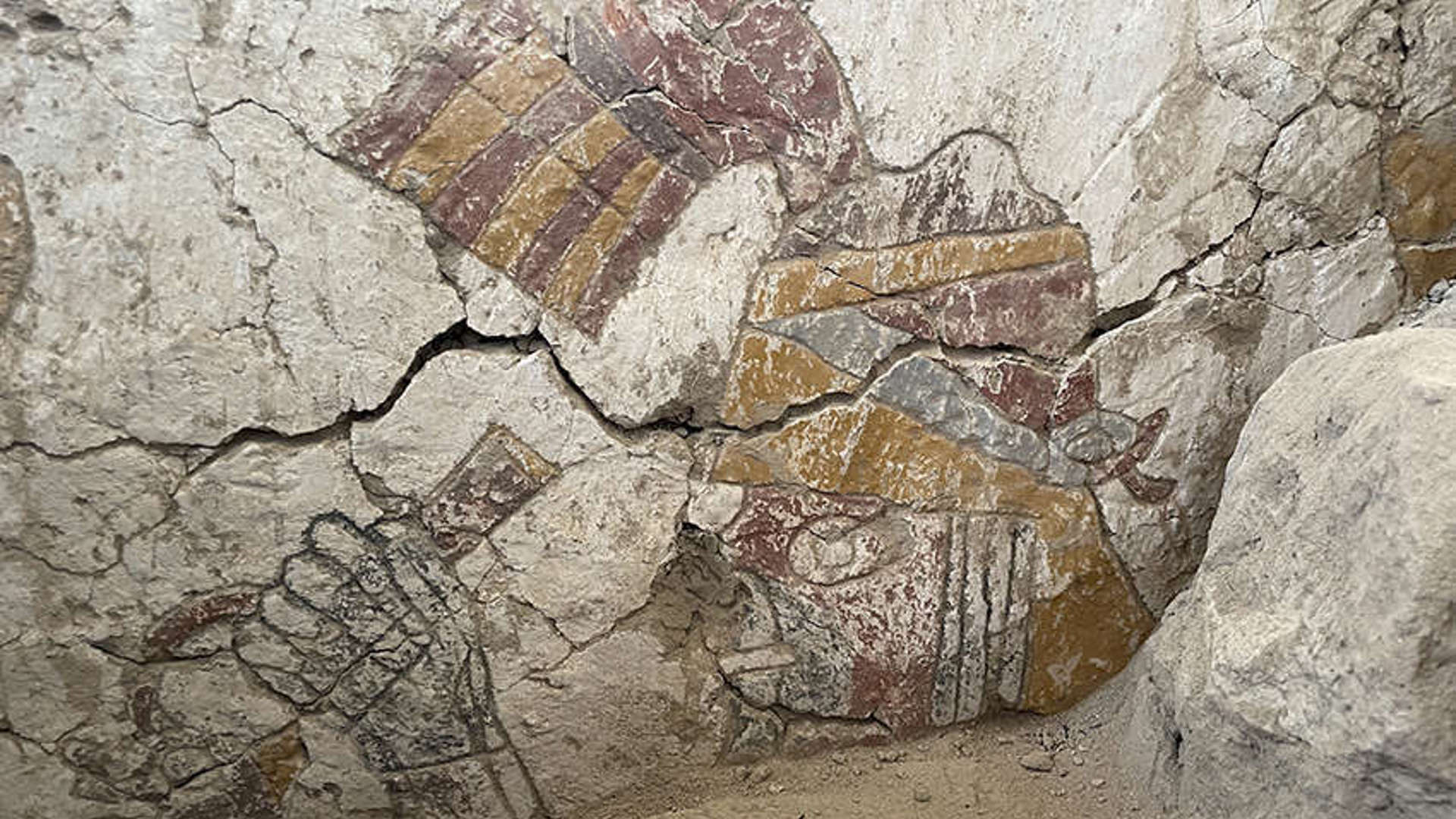
Painting Creativity on a Moche Monumenal Frontier
Located at the monumental frontier of the Moche world, Pañamarca was once a soaring marvel of politico-religious life and artistic creativity in the Nepeña Valley of the north-central coast of Peru. Coeval with the New Temple at Huacas de Moche, and other late Moche centers (ca. 600–800 CE), Pañamarca’s builders and painters turned up the volume in their craft. When newly made, its monuments would have gleamed with aesthetic effects of richly-colored figures, painted at varied scales on the bright white backgrounds of adobe walls. Although the general style of flat polychrome compositions of humans, non-humans, and other things was widely shared across several late Moche centers, the techniques of wall painting were distinct between Pañamarca and what is known from Huacas de Moche (the latter including fragments of wall painting from Huaca del Sol curated at the Hearst Museum). But in their particular imagery these works were even more strikingly unprecedented. In this digital poster with planned multimedia features, we share findings from the 2022 season of the PIA “Paisajes Arqueológicos de Pañamarca.” This work included the discovery and meticulous documentation of painted architecture and archaeological contexts to reveal images that had not been seen since their closure more than 1200 years ago. These painted monuments prove that Pañamarca was a place of unexpected artistic innovation. At Pañamarca, makers were not only permitted but also apparently encouraged, to play with and elaborate on artistic conventions in new and meaningful ways—as its people made a place for themselves in the far southern Moche world.
The Team

Michele Koons, PhD
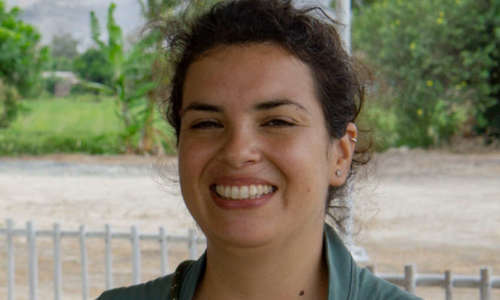
Jessica Ortiz Zevallos
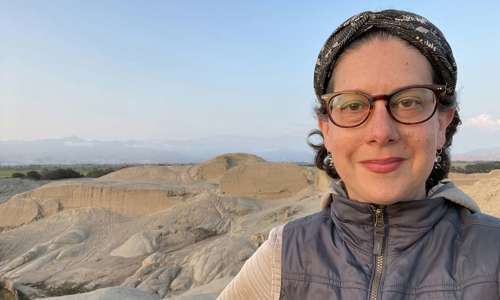
Lisa Trever
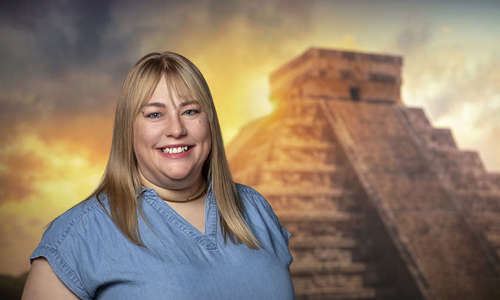
Amy M. Gillaspie, MA, RPA
